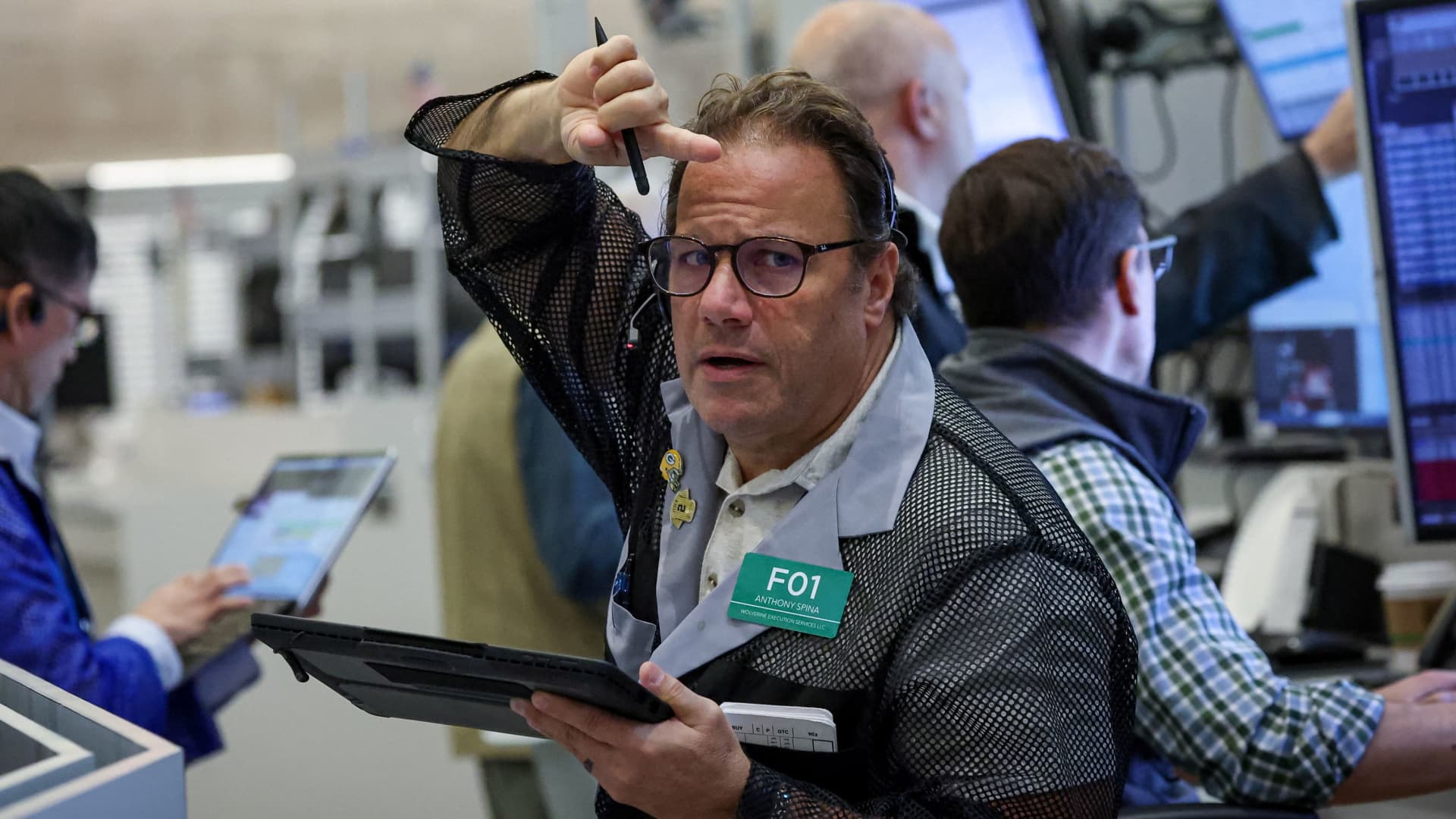(These are the market notes on today’s action by Mike Santoli, CNBC’s Senior Markets Commentator. See today’s video update from Mike above.) The core tenets of the bullish case for stocks were all on display and up for a test today: Insatiable AI-buildout demand, a Fed lowering rates as a precaution rather than an emergency response and a settling down of trade frictions. Most evidence is coming through with a positive tilt, confirming consensus assumptions, though the muddled market action and hawkish tone from Fed Chair Jerome Powell suggest plenty of good news was largely priced in for the moment, with some nagging questions about the current tenor of the real economy complicating the story. The as-expected quarter-point Fed rate cut was greeted with an initial shrug. But Powell’s effort to inject uncertainty around a December rate cut, and the dissenting vote in favor of no rate change out of the Kansas City Fed President, were wrinkles the market wasn’t ready for and could restrain expectations of just how much lower short-term rates will head from here given stickier inflation, buoyant equity markets and not much evidence of outright reductions in total employment. This as the S & P 500, which briefly twitched lower by half a percent after Powell said a December rate cut was not a forgone conclusion , was sitting at the top of its upward-moving trend path: Another day when Nvidia virtually alone has supported the S & P 500 as a solid majority of stocks sit in the red. Tuesday, as widely noted, was the worst day in terms of breadth on a session when the S & P 500 was up since at least 1990. This is, in part, just a reflection of a hyper-concentrated index, with Nvidia at an 8.6% weight and the top seven stocks commanding 35%. This isn’t in itself alarming in the moment, though such a narrow market often works against the duration of an advance. So much capital pouring into AI/data-center/storage/power-generation is depriving attention and financial oxygen to some other parts of the economy. There have been other signs of erratic action and extreme divergences: The volatility of individual stocks relative to index volatility is near a record high. One effect of this narrowing, top-heavy leadership is it’s made last year’s popular call to shift into equal-weight index strategies has been a flop. Here’s the equal-weighted S & P 500 vs. the standard index, collapsing to fresh lows. The Volatility Index (VIX) had been inching higher this week even as the S & P 500 has been up in smallish increments, a sign of some building tension under the surface. And yet with the Fed decision out of the way VIX is little changed even with the indexes chopping around. Nvidia’s projection of $500 billion in revenue over the next five-to-six quarters is a de facto upward guide and if reliable means that many of the concerns about a “spending cliff” in AI capex is premature. In a very real way Nvidia is collecting what would otherwise be hundreds of billions in free cash flow from its “hyperscaler” customers, on which Nvidia earns 70% grows margins and better than 50% net margins. For now, the market seems fine rewarding all involved for their participation in this urgent buildup of computing capacity, and if it lasts then Nvidia at $5 trillion is still not all that aggressively valued . A big if, perhaps. Meantime — as semis grow stupendously overbought relative to their own uptrend — financials, consumer cyclicals and the equal-weight S & P 500 are all down a bit for the week. The deceleration in hiring, uptick in corporate layoffs, still-weak consumer confidence, struggling housing market are all partial offsets to the thriving corporate and capex sector. Longer-term, cyclicals and financials are hanging in fine and there’s been no outright defensive turn in sector performance, as Wall Street for now sees a late-2025 soft patch ending as some fiscal help stokes activity in early 2026. While Powell’s hawkish tilt causes a slight flutter, Wall Street recognizes that we are some seven months from a new (presumably more dovish) Fed chair, big tech companies are trouncing earnings forecasts and seasonal factors favor some kind of rally extension in November.





